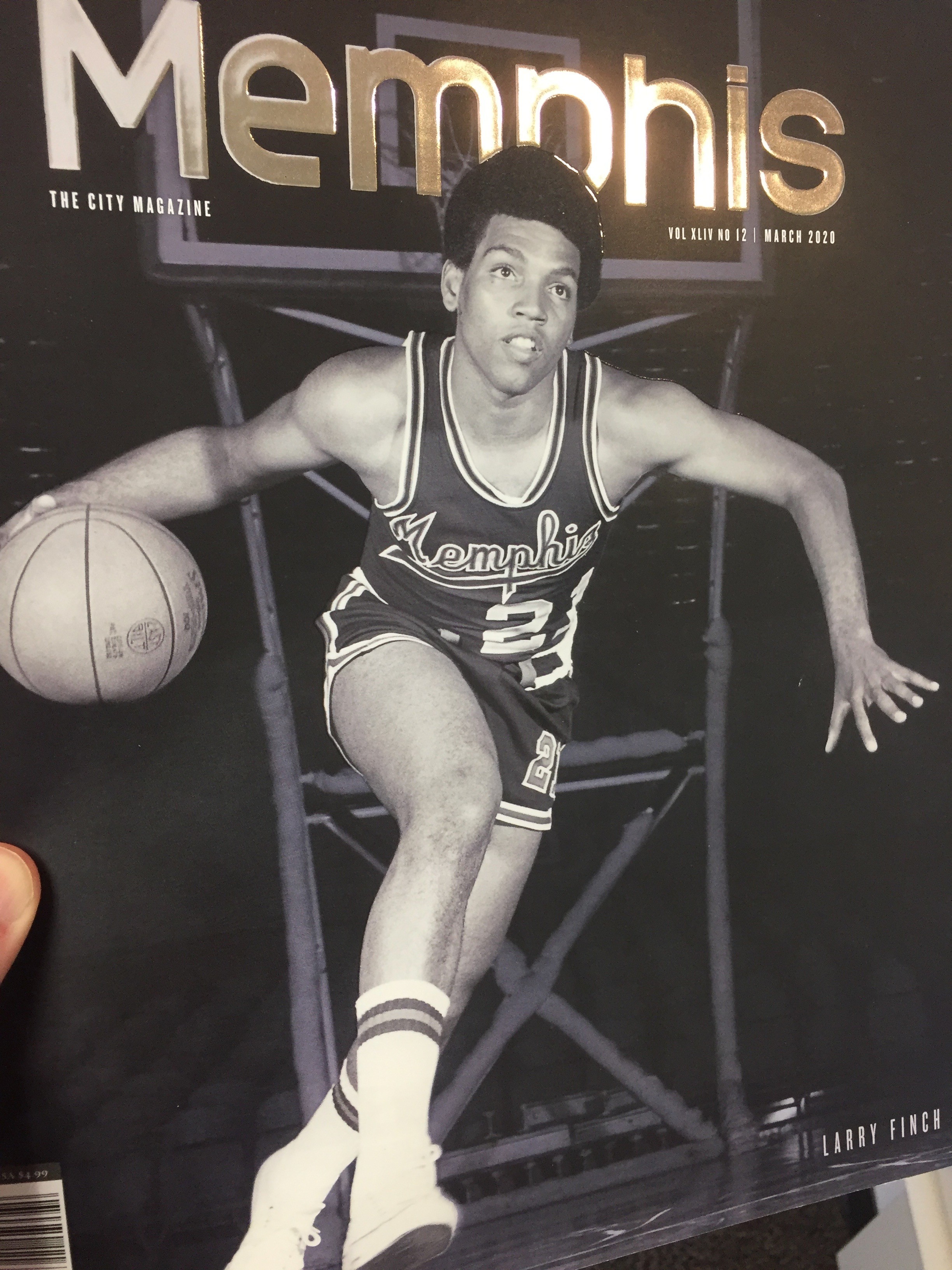When you step into the Pink Palace Museum, you’re surrounded by the stuff of history: Native American tools, Civil War rifles, a reconstructed Piggly Wiggly, a sign from 1968 proclaiming I AM A MAN. Each artifact tells a story about who we are and how we got here. The stuff of history now includes a Memphis State T-shirt with a basketball drawn inside a pyramid, touting “THE TOMB OF DOOM.”
“Tiger Hoops,” a new Pink Palace exhibit, explores the history of basketball at what is now the University of Memphis. It is packed with objects that reflect the sport’s evolution over a century. You can check out pennants for the first teams at West Tennessee Normal School, an original women’s uniform with bloomers, a trophy from the 1957 National Invitational Tournament, the jerseys of Tiger legends Larry Finch and Penny Hardaway, and the astoundingly enormous sneaker of William Bedford.
 Mike Olmstead Collection | Courtesy of Pink Palace Museum
Mike Olmstead Collection | Courtesy of Pink Palace Museum
Ronnie Robinson
But Memphis basketball is about more than Tigers on the court. It is about Memphians of all stripes.
What can sports tell us about who we are and how we got here? We wanted to understand what meanings Memphians assigned to the Tigers. As one way there, we asked people to lend their T-shirts. Eighty-four of those shirts now fill an entire wall of the exhibit, representing a passion for hoops.
The shirts chronicle great moments, including Final Four runs in 1985 and 2008. They highlight beloved players such as Andre Turner and D.J. Stephens. They shoot zingers at Louisville and Kentucky. Some feature a penny. Others celebrate the Pyramid, a.k.a. “The Tomb of Doom.” There are also some terrible, terrible puns (“I’m in the CAL-ZONE”).
While donating T-shirts, Memphians reflected on their fandom. Many talked about family and community. For a few, Tiger basketball connected them to a deceased spouse or relative.
On the exhibit’s companion website, (tigerhoops100years.com), fans considered the significance of basketball for the city. Steve Pike, the museum’s former executive director, sums it up as “community pride.” Memphis has much to offer but scuffles for national recognition. The basketball team, with its triumphs and trials over the decades, mirrors this scrappy ambition. As Pike states, “The Tigers are shorthand for us.”
Others emphasize the unifying power of sports. “Like no other sports team in Memphis, the U of M Tigers bring our city together,” states one typical entry on the website. “During the heat of the games, people are no longer black, white, or yellow, Muslim, Jewish, or Christian, Republican, or Democrat. We are all just Tiger fans.”
I admit to some skepticism about that sentiment. Upon moving to Memphis in 2004, I heard many stories about how Larry Finch and the 1973 Memphis State Tigers healed the city’s wounds after the 1968 assassination of Martin Luther King. I eventually researched and wrote about that moment. The truth, I learned, is more complicated.
Yes, there was extraordinary enthusiasm among both whites and blacks as the Tigers reached that NCAA championship game. But it occurred as a court-ordered busing program was integrating public schools. White flight was underway. City politics were polarized by race. Mayor Wyeth Chandler celebrated the racial healing of the Tigers but also stoked racial tensions over busing. How much did basketball matter?
That question informs our entire exhibit. In “Tiger Hoops,” basketball tells a story about Memphians — sometimes for the better, sometimes for the worse. It reflects our self-image as proud, modern, and together. It also exposes our patterns of racial and gender discrimination, our exploitation of amateur athletes, our anxieties about being a second-class city.
And now, I guess, it tells a story about me. For years, I was just a casual fan — I like basketball and I like Memphis, but as a Boston native and pro sports guy, I never got too wrapped up in the Tigers. I worked with the Pink Palace on this exhibit because of my academic interests in sports history and civil rights.
But this year, the Goudsouzians split season tickets with another family. And I’m hooked — absolutely, irrationally hooked on the athletic endeavors of 19-year-old kids, the same kids I see in my classrooms. On the way to school, I debate with my two young sons about the best lineups. On the way home, we tune to sports-talk radio. My daydreams often revolve around how Coach Penny can beat zone defenses.
So now we’re real Tiger fans — and real Memphians. But just a few years too late to have entered the CAL-ZONE.
Aram G. Goudsouzian is a professor of history at the University of Memphis and the guest curator of “Tiger Hoops,” which is on exhibit at the Pink Palace from March 7 to October 4, 2020.

 Larry Kuzniewski
Larry Kuzniewski 


